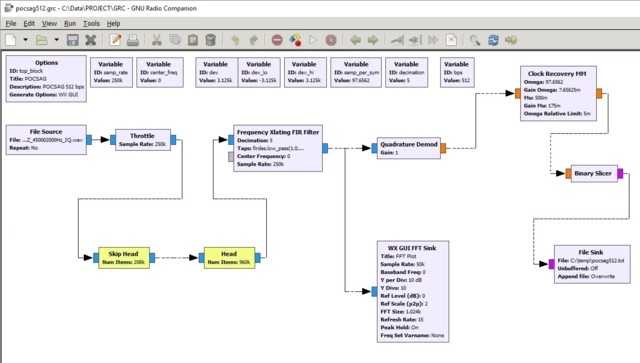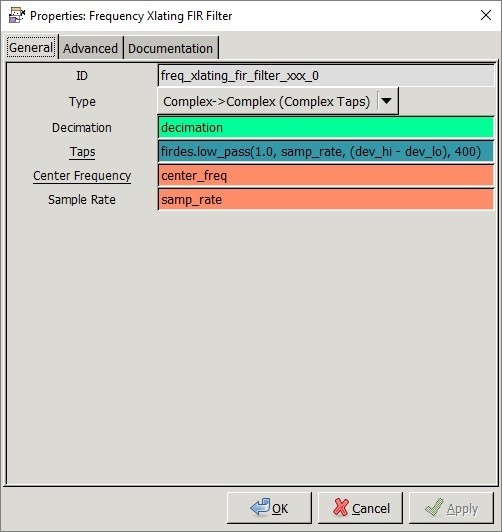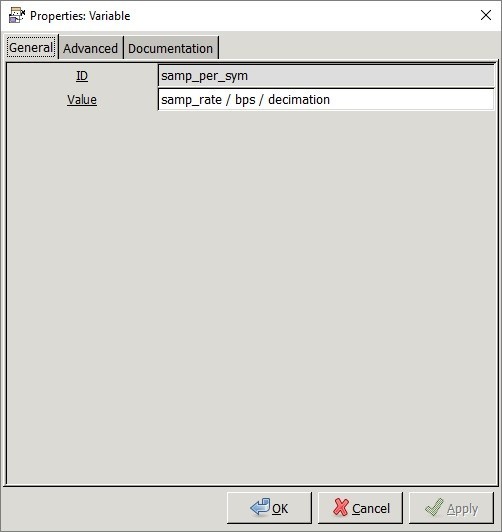By using SDR# & RTL-SDR I recorded 32 bit IEEE float baseband file of a POCSAG transmission (450.002 MHz) and examined the signal with PDW + virtual audio cable. PDW displayed ** and data rate 512 bps. With GNU Radio I demodulated the baseband file and wrote the results to text file. Quadrature Demod block gain values 1 - 3 seem to be suitable for IQ files recorded from quite strong signals. File sink file write process do not finish always correctly (result: empty file) if flowgraph is terminated by using kill operation in file menu, better to use stop button & close window in FFT sink block.
https://ibb.co/bDD8XJ


Python code which decodes the file created by GNU Radio to a 1's and 0's
f = open("pocsag512.txt", "rb")
d = f.readlines()
f.close()
d[0] = d[0].replace('\x00', '0')
d[0] = d[0].replace('\x01', '1')
f = open("out-d1.txt", "w")
f.write(d[0])
f.close()
print 'converted'
Some investigation of the out-d1.txt file:
The frame synchronization code after preamle of 576 bits (polarity of the preamble is 0xAA)
01111100110100100001010111011000
Many idle codeword structures
01111010100010011100000110010111
I also did some short investigation by using Dragino Lora module (SX1278) with Arduino Uno. Semtech SX1278 datasheet states that it supports (FSK) data rates from 1200 bps to 300 kbps. SX1278 triggered RSSI and preamble detected interrupts when it was set to FSK 450.002 MHz 512 bps, although no packet data in RX fifo ...

















Kommentit
Tämän blogin kommentit tarkistetaan ennen julkaisua.